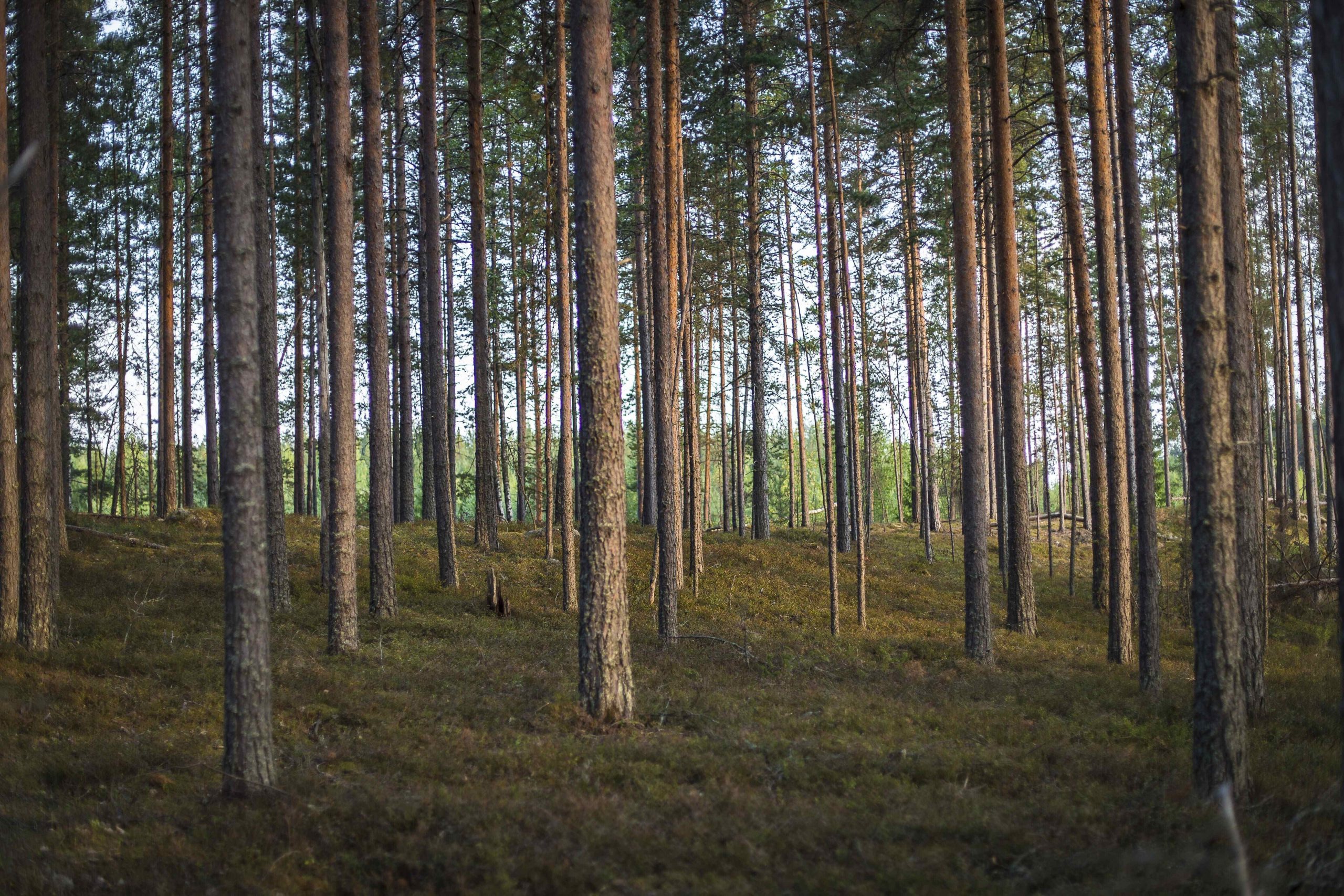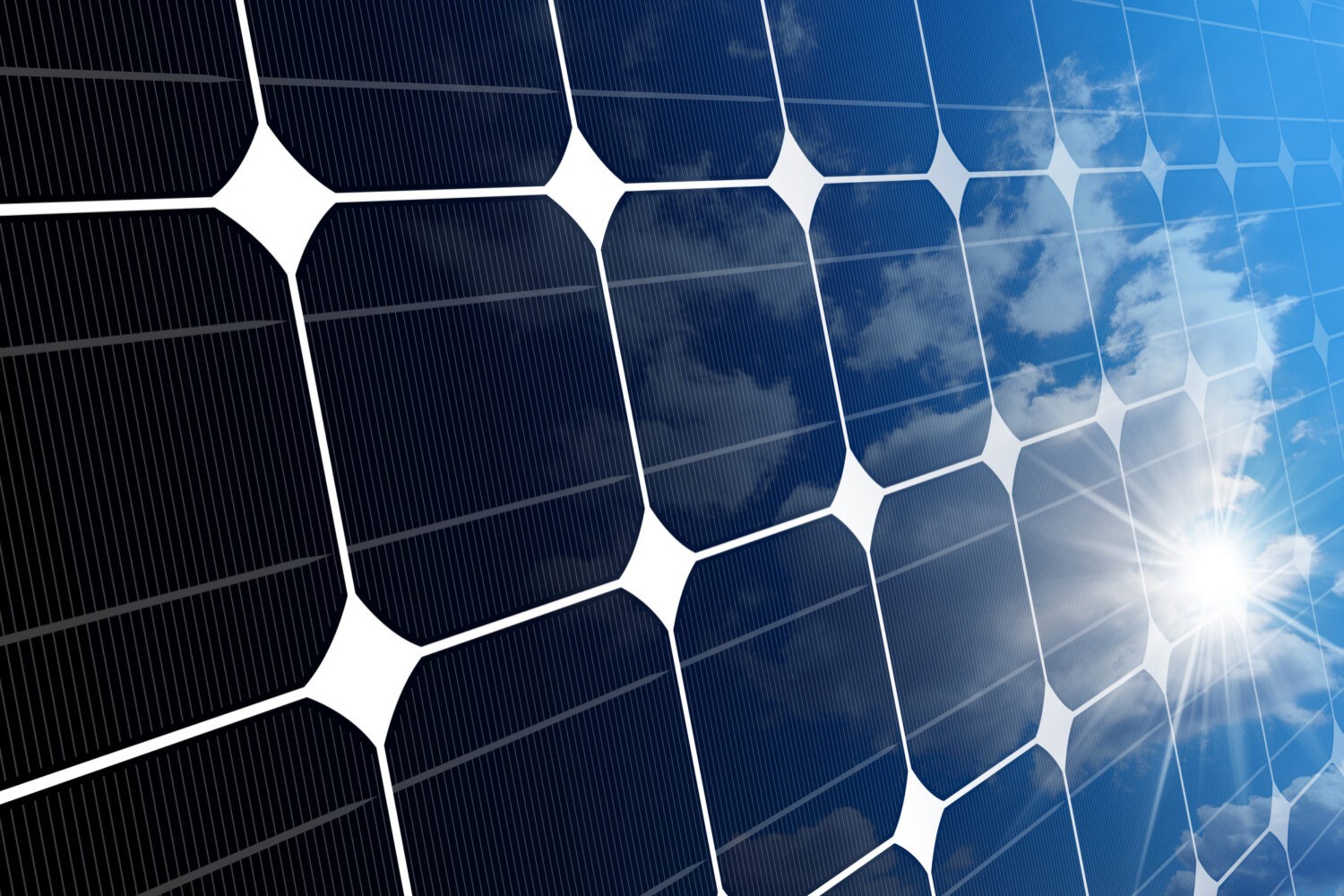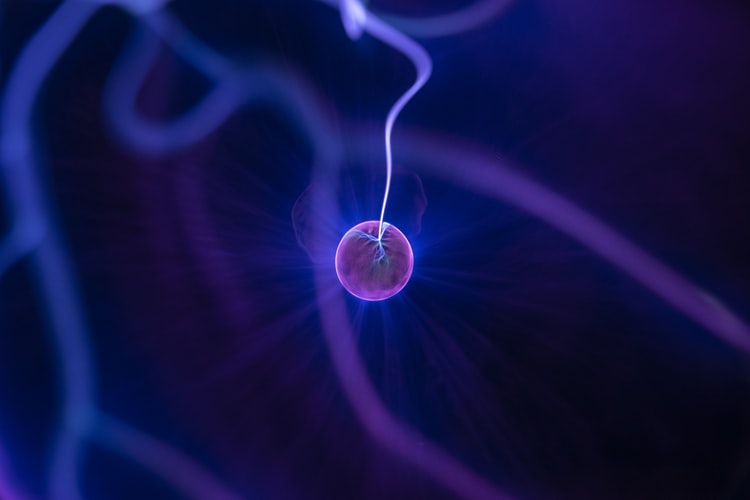
Is nuclear power renewable? The debate goes on
A report by EU classed it as a sustainable green investment but the decision has prompted criticism among the scientific community
In April a report by the Joint Research Centre, the European Commission’s in-house science service, classed nuclear energy as a sustainable source, concluding that “there is no science-based evidence that nuclear energy does more harm to human health or to the environment than other electricity production technologies already included in the EU Taxonomy as activities supporting climate change mitigation”.
JRC’s positive valuation was influenced by the fact that nuclear energy doesn’t produce CO₂ emissions, so its impact on the environment is pretty low, comparable to solar and wind energy. Besides, new-generation nuclear power plants are designed to have a very low accident risk.
In April a report by the Joint Research Centre, the European Commission’s in-house science service, classed nuclear energy as a sustainable source.
Despite EU green pass, this decision has prompted criticism among the scientific community. According to many, an important aspect to be considered is how to deal with radioactive waste. A report by IAEA shows that waste is classified according to its potential hazard.
This categorization varies slightly from country to country, but in principle the main criteria for determining the type of waste are derived from radioactive content and half-life, i.e., the time taken for the waste to lose half of its radioactivity. Low level wastes arise mainly from routine facility maintenance and operations and can be contaminated clothing such as protective shoe covers, floor sweepings, paper and plastic; intermediate level waste can be reactor water treatment residues and filters used for purifying a reactor’s cooling water.
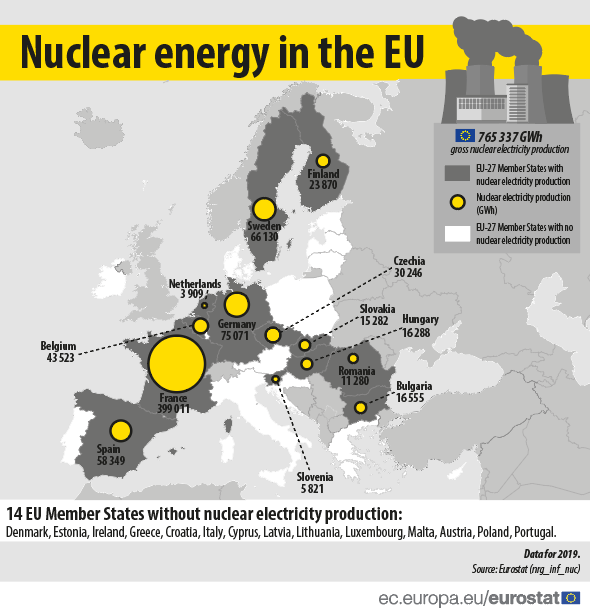
Eurostat data on nuclear power generation updated to 2019.
Low and intermediate level wastes comprise 97% of the volume but only 8% of the radioactivity of all radioactive waste. High level waste consists mostly of spent fuel from reactors: because of the radioactivity and heat generated, this waste has to be shielded and cooled. The safe disposal of nuclear waste, which remains radioactive for hundreds of thousands of years, is still an unresolved problem. After giving up the idea of setting them into space or ocean trenches, radioactive wastes are disposed in storages or cooling pools near the plants.
Currently, no artificial barrier can protect the biosphere from radiations. The preferred final end point remains deep geological disposal, isolating the waste deep inside a suitable host formation. The only deep geologic radioactive waste repository is located in New Mexico and it is called WIPP (Waste Isolation Pilot Plant), but Finland is planning to build the world’s first permanent underground nuclear waste storage facility, which is expected to be operational by 2025.
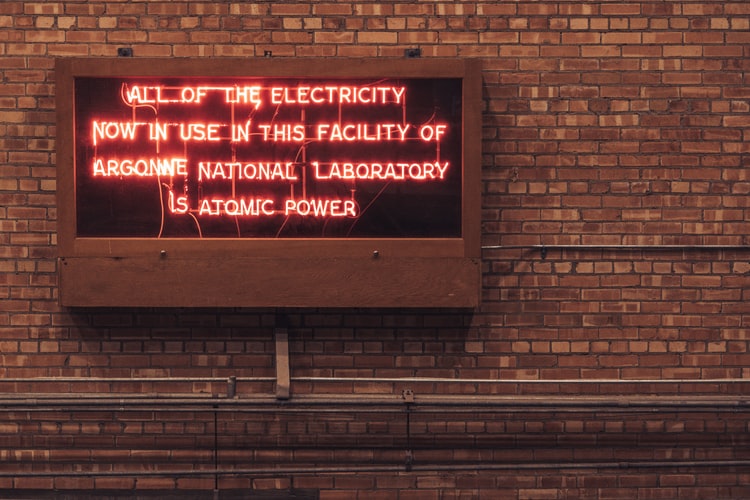
A sign hanging on the wall of the first nuclear power plant ever built in Idaho, now converted to a museum. | Unsplash
According to Legambiente, the possible hydrogeological risks are still not clear, while Greenpeace claims that nuclear industry’s final goal is to get public funds to expand their business. Financial Times columnist Wolfgang Münchau has questioned the criteria, maybe “too soft”, used by the Commission to value the environmental impacts.
To face the post–World War II industrial expansion in Europe, the six members of ECSC (European Coal and Steel Community) decided to bet on nuclear to reach energy independence. Euratom (European Atomic Energy Community) was born on 1st January 1958; Italy was among the members and its original purpose was to implement nuclear fission plants.
In 1986 Chernobyl disaster revived the debate on nuclear; in Italy, all four plants (Caorso, Garigliano, Latina, Trino Vercellese) were closed following the Italian nuclear power referendum in 1987.
According to Legambiente, the possible hydrogeological risks are still not clear, while Greenpeace claims that nuclear industry’s final goal is to get public funds to expand their business.
In the wake of the Fukushima nuclear disaster in March 2011, the prominent role of nuclear energy in Europe was questioned by many governments. The German government plans to have shut down all remaining nuclear reactors by 2022. In contrast, France still relies heavily on nuclear power generation. According to Statista, the nuclear share is also quite high in a few other European countries such as Slovakia, Ukraine, Hungary and Belgium. The largest nuclear power reactor under construction in the world as of 2021 was located in Finland, the Olkiluoto 3, with an expected gross electricity generation of 1.72 gigawatt electrical.
